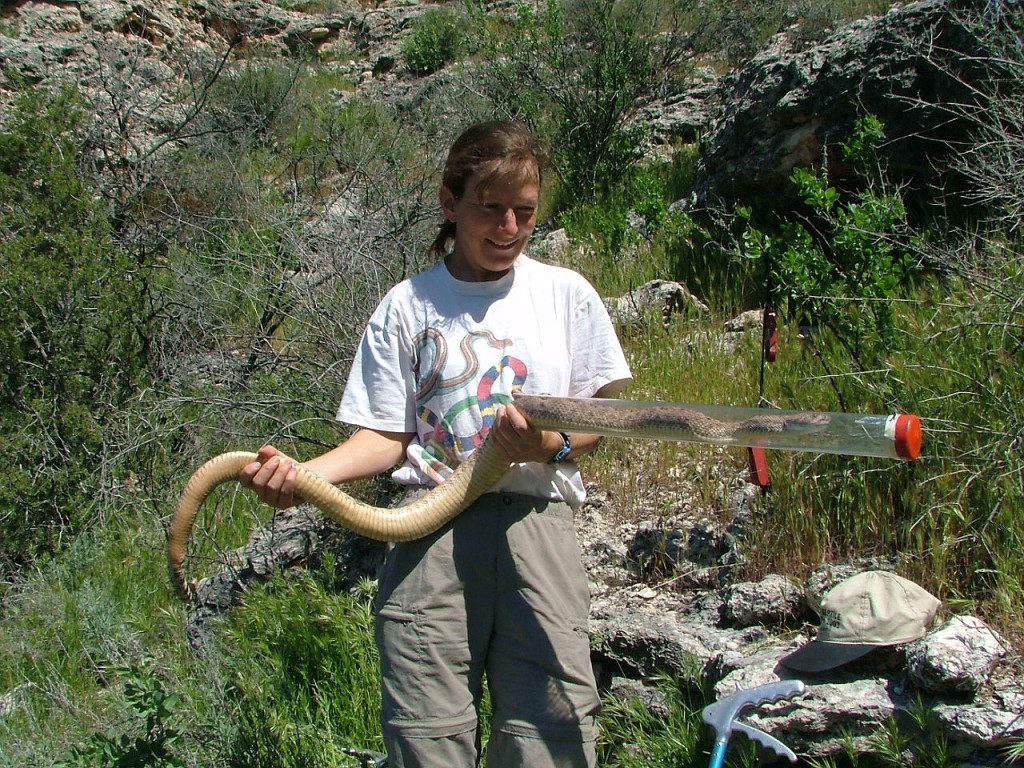As Arizona continues to see development into formerly rural areas, additional research is emerging to help protect wildlife species. Because the state is home to a dozen rattlesnake species, understanding best practices for relocation is more than just a humane undertaking, it is important for logistics and safety. These findings are part of a paper published in Conservation Biology.
One of the paper’s authors, Erika Nowak, has been studying rattlesnakes since 1994. A researcher with NAU’s Biological Sciences Department and the Colorado Plateau Research Station, Nowak also has studied animal relocation for renewable energy projects.
“A lot of people just assumed that you could move animals out of harm’s way but my research has shown it is unsuccessful.” Nowak and her colleagues studied western diamond-backed rattlesnakes using tiny transmitters for up to a year before moving them to another location and then followed their movements afterward.
“More than half the animals returned from the place they had been moved to and more than half died,” Nowak said. Some animals were killed by humans and others developed illnesses, possibly because of the physiological stress of moving.
Nowak’s subjects, including snakes more than 20 years old, live in the same area their whole lives. After being moved as part of the study, some took more than a year to return home, using what appeared to be a form of triangulation.
While Nowak focused on rattlesnakes, her co-authors studied Gila monsters and Sonoran desert tortoises, groups that had not been analyzed in this capacity. The researchers discovered each of these groups was connected to their local environments and followed their instincts to get back home, similar to earlier findings of other animals species.
The research brought insights that could help the animals when relocation is the only option. “One under-studied option that may work, even in reptiles, is to figure out groups of animals that seem to associate with one another and to move them in those groups to a nearby similar habitat, said Nowak, who compared rattlesnakes to other more obviously social animals like prairie dogs. Instead of moving animals to a designated dumpsite, Nowak would like to see people utilize the available science of translocation.
The information could be useful in scenarios other than development-related relocation: knowing the best methods for moving animals would be useful following a crisis event like fire or floods, or when necessitated by a region’s changing climate.



